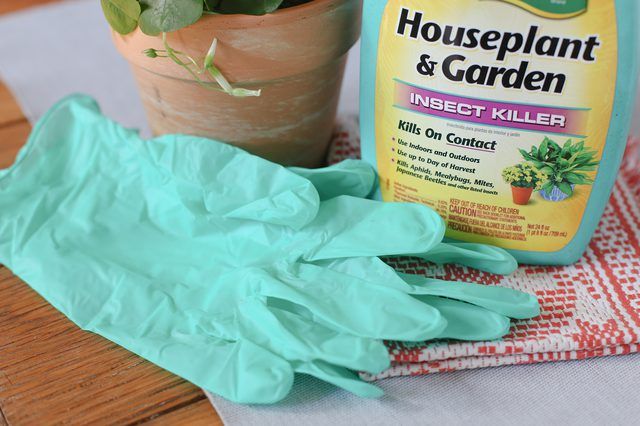Bulbs
Flower Basics
Flower Beds & Specialty Gardens
Flower Garden
Garden Furniture
Garden Gnomes
Garden Seeds
Garden Sheds
Garden Statues
Garden Tools & Supplies
Gardening Basics
Green & Organic
Groundcovers & Vines
Growing Annuals
Growing Basil
Growing Beans
Growing Berries
Growing Blueberries
Growing Cactus
Growing Corn
Growing Cotton
Growing Edibles
Growing Flowers
Growing Garlic
Growing Grapes
Growing Grass
Growing Herbs
Growing Jasmine
Growing Mint
Growing Mushrooms
Orchids
Growing Peanuts
Growing Perennials
Growing Plants
Growing Rosemary
Growing Roses
Growing Strawberries
Growing Sunflowers
Growing Thyme
Growing Tomatoes
Growing Tulips
Growing Vegetables
Herb Basics
Herb Garden
Indoor Growing
Landscaping Basics
Landscaping Patios
Landscaping Plants
Landscaping Shrubs
Landscaping Trees
Landscaping Walks & Pathways
Lawn Basics
Lawn Maintenance
Lawn Mowers
Lawn Ornaments
Lawn Planting
Lawn Tools
Outdoor Growing
Overall Landscape Planning
Pests, Weeds & Problems
Plant Basics
Rock Garden
Rose Garden
Shrubs
Soil
Specialty Gardens
Trees
Vegetable Garden
Yard Maintenance
How to Care for a Shamrock Houseplant
How to Care for a Shamrock Houseplant. The compact-foliage plants filling florists' shelves at St. Patrick's Day with their emphatically green, three- or four-lobed leaves may be sold as shamrocks, but that's just marketing. As annual plants, true shamrocks (Trifolium dubium) don't grow well indoors. The St. Patrick's Day substitutes, Irish...
The compact-foliage plants filling florists' shelves at St. Patrick's Day with their emphatically green, three- or four-lobed leaves may be sold as shamrocks, but that's just marketing. As annual plants, true shamrocks (Trifolium dubium) don't grow well indoors. The St. Patrick's Day substitutes, Irish shamrocks (Oxalis acetosella) and good-luck plants (Oxalis deppei, Oxalis tetraphylla), are hardy in U.S. Department of Agriculture plant hardiness zones 6 through 9a and 8 through 10, respectively. With proper care, they also make long-lived houseplants. Display your indoor shamrock where its charming, but toxic, leaves won’t endanger children or pets.
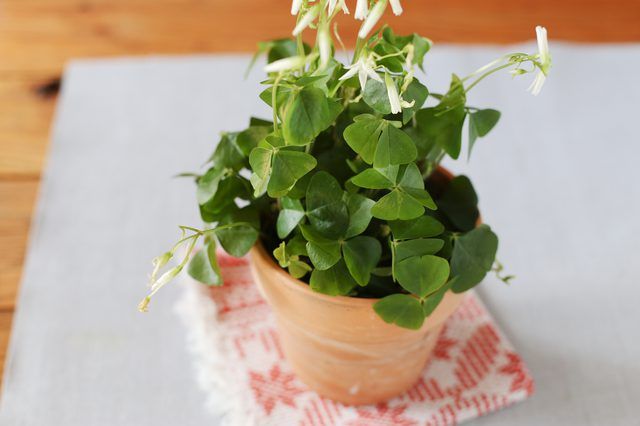
As a bulb pant, your shamrock follows its growing and flowering stages with two to three months of dormancy. When new shoots appear -- usually about six weeks after dormancy ends -- start a fertilizing regimen. Once a month, replace its regular water with a solution of 1/4 teaspoon, or the label's recommended amount, of 10-15-10 fertilizer in 1 quart of water. When the plant stops blooming, reduce fertilizing to every other month until the foliage dies back and the bulb goes dormant. Then move it to a cool, dark area to rest for two or three months without water or fertilizer.
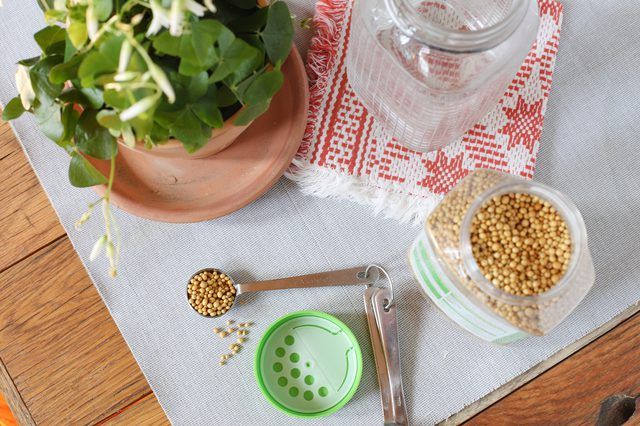
A wilted, yellowing shamrock needs water, but too much water increases its risk of root rot. To avoid both problems, check the soil's surface daily, and water only to keep it damp. Set the pot beneath a slowly trickling faucet until water starts flowing from the bottom drainage holes. Once a week, move the shamrock to a dim area and mist it lightly with water from a spray bottle for extra humidity. After watering or misting, let the plant dry before returning it to its normal spot. Otherwise, the sun may brown the leaf edges or flowers.
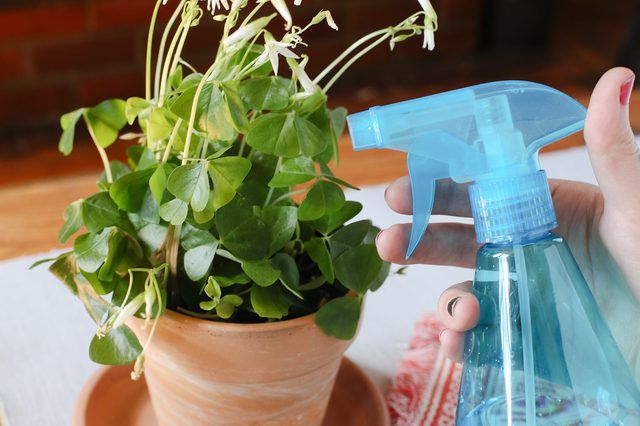
To groom your shamrock, snip its spent flowers and leaves off at the base with sharp, clean stem cutters disinfected with a cloth dipped in rubbing alcohol between cuts. To repot, wait until the shamrock has completed dormancy. Lift it from its container and gently pull the small, new bulbs from the sides of the larger ones. Fill the new container with any high-quality, well-draining potting soil; a 10-inch container has room for 10 bulbs spaced 3 to 4 inches apart. Plant them 1 1/2 inches deep, with the roots spreading horizontally. Water well to eliminate air pockets. Keep the soil damp and begin fertilizing when the new shoots emerge.
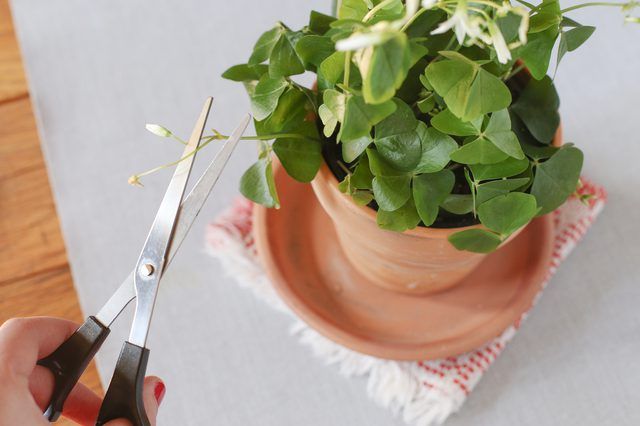
Proper watering protects the shamrock from root rot, its only serious disease. Occasionally, sap-sucking aphids and whiteflies may coat the leaves with sticky, transparent waste. To get rid of them, move your plant to a dimly lit area and spray it with ready-to-use insecticidal soap until all its surfaces drip. Repeat every two or three days until the pests are gone. Dress in protective clothing, waterproof gloves and safety goggles and follow the product label's instructions when spraying. A shamrock getting too much heat or too little light becomes thin and leggy. Move it to a window with filtered sunlight; keep it, if possible, between 70 and 75 degrees Fahrenheit during the day and between 50 and 65 degrees at night.
